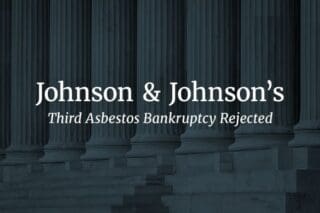The old E.T. Barwick Mills plant set fire on Saturday with huge gas explosions, creating a fear of asbestos exposure. Testing is underway per federal officials’ requirements.
“We are currently running analytical [tests] on the water samples that were taken, downgrading from the site. All day yesterday [Sunday, Nov. 15], our numbers were looking good as far as the impacted neighborhoods with the plumes tracking southwest,” said Carter Williamson, the federal on-scene coordinator for the Emergency Response and Removal Branch of the U.S. Environmental Protection Agency (EPA) office in Atlanta.
Williamson was on scene to assist with the emergency of the fire and conduct air testing. “That was good up until the afternoon, and then when the temperature kind of changed last night, we lost some of the potential for combustion,” added Williamson.
The heavy, black swirling smoke could have contained airborne asbestos. Because of the potential threat, residents within a half-mile of the area were advised to remain indoors and keep their heating and air units off. Those especially with respiratory problems, the elderly, and students in nearby schools were warned.
According to David Hamilton, the LaFayette City Manager, a branch of the U.S. Department of Health and Human Resources, the Agency for Toxic Substances and Disease Registry (ATSDR), was responsible for conducting the asbestos tests.
The EPA is following standard procedures for fires that may have contained asbestos. The chemical was widely used for its immense heat-resistant properties, but it can be even more dangerous with fire, and pose an even greater risk to human health.
Insulation, roof materials, drywall, ceiling tiles, flooring, and asphalt are all materials commonly known to contain asbestos. When they’re ignited with fire, the smoke made of carbon dioxide, water vapor, carbon monoxide, fine particulate matter, hydrocarbons, and other organic and non-organic substances can include the minute asbestos fibers.
According to the Center for Disease Control (CDC), “individuals [should] remain at least 1,000 feet away from burning debris piles and wear appropriate protective clothing. Most protective equipment that firefighters use will eliminate the exposure to the fibers, but in the secondary stages of the fire, a firefighter may remove the protective gear for greater comfort and not realize that there may be a high asbestos level present.”
Debris should always be taken away from a fire site, but it must first be thoroughly tested for the presence of asbestos before the removal can begin. The EPA also plans to continue its monitoring of the site for both air and water contamination as it “thought the area would have more particulate matter going into the atmosphere.”
The EPA is working with Ashgan Products, who took over the mill after it stopped production in the 1990s, to ensure no hazardous chemicals were at the site.





